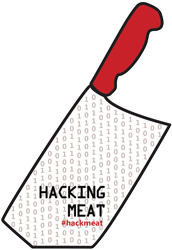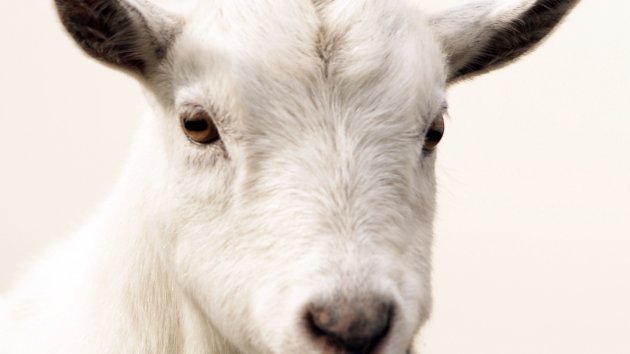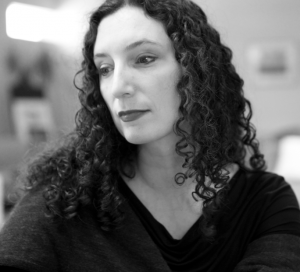
Food+Tech Connect and GRACE Communications Foundation present Hacking Meat, an online conversation exploring how information and technology can be used to hack (or reimagine) a more sustainable, profitable and healthy future for meat. Join the conversation and share your ideas or product requests in the comments, on Twitter using #hackmeat, Facebook , Tumblr or at the Hack//MeatSilicon Valley happening June 21-23 in Palo Alto.
Guest post by Haven Bourque, Haven B Media
I ate dinner last night with 100 or so farmers and their friends. It was a beautiful summer evening in Davis, CA, where we sat at long tables on the rolling lawn of the Glide Ranch, a short distance from placidly strolling cattle and softly nickering horses. The ranch is the home of Community Alliance with Family Farmers, one of California’s most quietly impressive farm advocacy groups, where we gathered for CAFF’s annual celebration of sustainable farming and the success of their Buy Fresh, Buy local campaign.
Although I work in food and agriculture, 90% of my time is spent commandeering a technology device. I tweet, type and trawl the internet all day long. If you’re reading this, chances are your time is spent this way too. Thus, I’ll never miss a chance to try to get closer to farmers who raise my food. It might sound trite, but I strongly believe that getting face-to-face with a farmer re-invigorates my commitment to buy local, and deepens my understanding of farming. Plus, it fuels my outrage – particularly at the industrial meat system that makes so many Americans sick and fat while threatening our ecosystem and brutalizing food producing animals. And it’s a reminder even ‘famous’ farmers still struggle to make a living, no matter how much Bittman and Pollan tweet about their progress.
But back to last night’s festive dinner on the ranch. As the hot sun faded and the grilled quail and endive platters approached our table, the temperature shifted to delightfully cool while the conversation ricocheted from the week’s battering over the farm bill to fracking’s threat to New York and CA farmers. I felt quite far from Silicon Valley and technology, but with the coming week’s Meat Hackathon on my mind, I asked a few farmers how information and technology could improve meat’s future.
I started with my tablemate, Thomas Nelson, who runs Capay Valley Farmshop. I halfway expected Thomas, a sincere guy with sharply quiet wit, to say something like ‘ Oh, isn’t there an Ap for fixing meat?’ He went easy on me. He said that after a few years of struggling with distribution challenges presented by his model of aggregating produce, meat, eggs, and value added products like olive oil and honey from his network of 30 Capay Valley farms, his organization this year turned the corner on sales, in part by working with multiple community partners, including institutions, small retail businesses, and online distribution services like Good Eggs, which he flagged as a major reason for the sales uptick. Score one for technology! A diversity of distribution outlets was one factor in the spike in sales, and a diversity of product, meat included was another. His customers were interested in buying quail, goat, duck and other ‘beyond burger’ meats. Thomas felt that these customers wanted a quality source of local meat, and that transparency – i.e., the information available about growers’ location, husbanding practices, and processing — was becoming more and more important to them. Tracing a meat source directly back to an individual farm is certainly one area in which technology has made a difference. Still, technology can do more to bring eaters and farmers closer, and to incite us to buy more of our meat direct from small family farms.
Leaving Thomas in peace, I wandered over to a small crowd that had gathered around the evening’s keynote; Karen Ross, Secretary of the California Department of Food and Agriculture. I wanted to bring up the Meat Hackathon, but I couldn’t get a word in edgewise, as my farm-bill expert friend Kari Hamerschlag was bending the Secretary’s ear about current ag policy. So I sat back down for more dinner. When Ross took the mic, I was pleased that she mentioned how important small-scale sustainable farming is to her administration. At that point I admit I tuned out of her talk and into my grilled quail and Bogle Cabernet, so I relied on the CDFA’s website to give me a sense of the administration’s public-facing stance. Would it actually put sustainable agriculture top of the agenda? I was very pleased to read this blog post about the New Farmer and Rancher program, which works to recruit, train and support new farmers, including a focus on sustainable farming for veterans returning from combat, and former farmworkers who wish to transition from hired hands to farm owners. According to the CDFA’s blog, distribution was cited by new farmers as a major challenge, just as Thomas had said. How can technology help a new farmer access markets close to home? Farmers want to farm, not log long distances driving on highways, burning gas and precious time they’d rather spend tending their crops and animals.
So even in these days of fancy technologies, we still need some basics, people. For all you vegetarians who refuse to read this: Let’s recognize that any technology that helps meat will also help small-scale sustainable farmers that integrate meat animals into their farming practices. I challenge the Hackathon to produce a concrete solution to bring eaters closer to their farmers, help enthusiastic eaters learn more about diverse sources of meat, and tackle the distribution challenges that farmers face nationwide. That’ll be worth tweeting!
How can information and tech help bring eaters and farmers closer together? Share your thoughts in the comments below, on Twitter using #hackmeat,on Facebook or at the Hack//Meat SV hackathon happening at The Stanford d.school in Palo Alto, June 21-23.
_______________________
Haven has 18 years in communications, working with diverse organizations ranging from prestigious non-profits to small start-up businesses, large corporations and individuals working on food systems, health and wellness, sustainable seafood and social justice. In her early career, she spent 10 years honing her skills in corporate marketing at international computer companies, launching groundbreaking new technologies that enabled multimedia in Europe and Asia – a sea change from her upbringing on her family’s self-sustaining organic farm. On the family farm, she learned to pull weeds, harvest, cook and compost as a young agricultural laborer whose out-of-school hours were spent with her hands in the dirt. Cooking followed farming. Pots simmering on the stove and the pleasures of the community table remain her overwhelming passions today. She lives with her husband and three truly exceptional Maine Coon cats in Oakland California.
Photo Courtesy: Photodisc/Thinkstock

